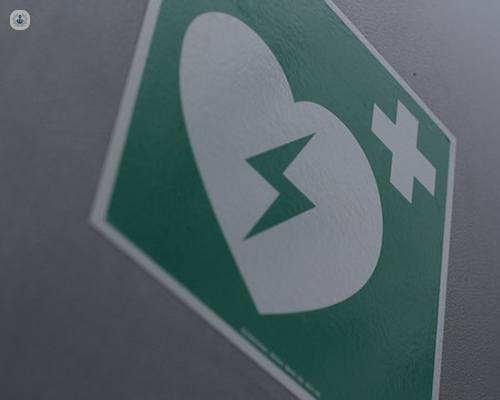Coronary CT scan: what you need to know
Written in association with:Leading consultant cardiologist Dr Laura Corsinovi explains all you need to know about coronary CT scans.

What is a coronary CT scan?
A coronary CT scan, also known as coronary computed tomography angiography (CCTA), is a specialised imaging test used to examine the coronary arteries. These arteries are vital as they supply blood to your heart muscle. When plaque (a build-up of fat and other substances) accumulates in the coronary arteries, it can narrow or block blood flow, leading to conditions like coronary artery disease, heart attack, or chest pain. A coronary CT scan provides a detailed look at your coronary arteries, helping doctors identify any narrowing or blockage that could cause issues.
How does a coronary CT scan work?
During a coronary CT scan, a special type of X-ray technology called computed tomography is used to create a series of cross-sectional images of your heart and coronary arteries. This is achieved through a rotating X-ray machine that takes multiple images around your chest. When combined by computer, these images create a 3D view of your coronary arteries, allowing doctors to assess any blockages or abnormalities.
In many cases, a contrast dye is injected into a vein in your arm before or during the scan. This dye helps highlight the blood vessels, making it easier to see any areas where plaque may be narrowing the arteries. The dye typically leaves your body within a day, usually through urination.
Who might need a coronary CT scan?
Doctors often recommend coronary CT scans for patients with specific symptoms or risk factors. If you have chest pain, shortness of breath, or other symptoms that suggest coronary artery disease, a coronary CT scan may help clarify whether blocked arteries are causing these issues. It can also benefit individuals who are at moderate risk for heart disease, especially those with risk factors like high blood pressure, diabetes, or a family history of heart disease.
A coronary CT scan may also be suggested if you are unable to undergo other heart tests, such as a stress test, due to other health concerns. While coronary CT can give a clear picture of the coronary arteries, it’s not usually the first-line test for everyone. Your doctor will help decide if it’s right for you based on your symptoms and health history.
What can you expect during the procedure?
The procedure itself is straightforward and usually takes about 15-30 minutes. You will be asked to lie on a table, which moves through the CT scanner. You may feel a warm sensation when the contrast dye is injected, but this fades quickly. To get the clearest images, you’ll be instructed to hold your breath for a few seconds during certain parts of the scan, as movement can blur the images.
After the scan, you can typically resume your normal activities. There’s no recovery time required, though it’s advisable to drink water throughout the day to help flush the contrast dye from your body.
Is coronary CT safe?
Coronary CT is generally a safe and non-invasive procedure, meaning it doesn’t require any incisions or needles in the arteries themselves. While the scan does use a small amount of radiation, advances in CT technology have significantly reduced the dose required for high-quality images. If you are concerned about radiation exposure, talk to your doctor; they can explain how the benefits of this test often outweigh any risks, especially for diagnosing and preventing serious heart issues.
If you would like to book a consultation with Dr Corsinovi, simply visit her Top Doctors profile today.


